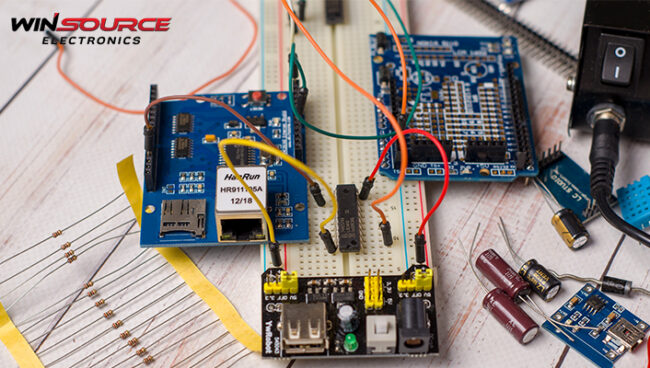
Electronic components are an integral part of modern technology, powering our devices and enabling seamless communication and function. It is not uncommon for electronic components to heat up during operation. However, here comes the question: Are these components heating mainly due to mass reasons? In this article, we will explore the factors that lead to heating of electronic components and evaluate the role of component quality in this phenomenon.
Understanding Component Heating: Before we delve into whether electronic components are heating due to quality problems, we first need to understand why electronic components generate heat during operation. Electronic components such as transistors, integrated circuits and power devices generate heat as a natural by-product of their operation. When electric current passes through these elements, it encounters resistance, resulting in energy conversion and heat release. So, to some extent, we would expect some degree of heating from electronic components.
Quality-Related Factors : While component quality can affect heat generation, it’s important to realize that it’s not the only determining factor. Quality-related issues that can cause electronic components to overheat include:
Manufacturing Defects: Defects that arise during the manufacturing process are another quality-related factor that can lead to excessive heating of electronic components. Such as poor soldering , which is an important step in connecting electronic components to circuit boards. Poor soldering can cause poor contact between the electronic component and the board, preventing heat transfer. This causes the components to build up heat during operation, increasing the potential for heat generation.
Counterfeit Components: Using counterfeit components (often low quality) can result in substandard thermal characteristics. Insufficient heat dissipation mechanisms, for example: Counterfeit components often do not have the effective heat dissipation mechanisms required by genuine components. They may lack heat sinks, thermal vias, or other critical components in the thermal design, preventing heat from being efficiently transferred from the component to the surrounding environment, causing the component to overheat.
Improper Component Selection: Selecting components that are not suitable for the intended application or operating conditions may result in overheating. Insufficient heat dissipation or incorrect power rating can warp components and cause overheating. When selecting components, careful consideration must be given to the required heat dissipation, power rating, and other operating conditions. Make sure that the selected components are suitable for the actual operating environment and have sufficient heat dissipation capacity to keep the component temperature within a safe range. In addition, select the rated power that meets the design requirements according to actual needs to ensure that the components can work stably without overheating.
Non-Quality Related Factors : It is important to acknowledge that various non-quality related factors can also have a significant impact on component heating:
Power dissipation: As mentioned earlier, the conversion of electrical energy into other forms, such as light energy or mechanical work, naturally produces heat. Power dissipation in electronic components during normal operation is an inherent characteristic and cannot be entirely attributed to component quality.
Design inefficiencies: Poor circuit design, inadequate thermal management, or inefficient power supply configurations can cause components to heat up beyond their optimum levels. These issues can be caused by design flaws, improper ventilation, or insufficient heatsinks, not just due to component quality. For example, too dense a layout between components on a circuit board can lead to poor thermal dissipation, causing heat to build up between components. These design inefficiencies can be caused by errors in the design process, imperfect analog and digital circuit design, insufficient thermal analysis, or neglect of environmental conditions. In order to solve these problems, reasonable circuit design, thermal management and power configuration are required.
Overloading and Environmental Factors: Excessive voltage or current levels, whether due to external factors or improper use, can cause components to overheat. Additionally, high ambient temperatures, poor ventilation, or the presence of dust and debris can hinder heat dissipation, resulting in elevated temperatures.
While the mass of an electronic component can affect its thermal behavior, it’s not the only reason a component heats up. Factors such as power consumption, inefficient design, overloading, and environmental conditions also play a role. However, quality-related issues, such as manufacturing defects and the use of counterfeit components, can exacerbate heating problems. To mitigate component heating requires a holistic approach that includes careful component selection, efficient circuit design, proper thermal management, and adherence to operating practices. By considering all these factors, we can ensure reliable and optimal performance of electronic components while minimizing heating-related issues.

COMMENTS